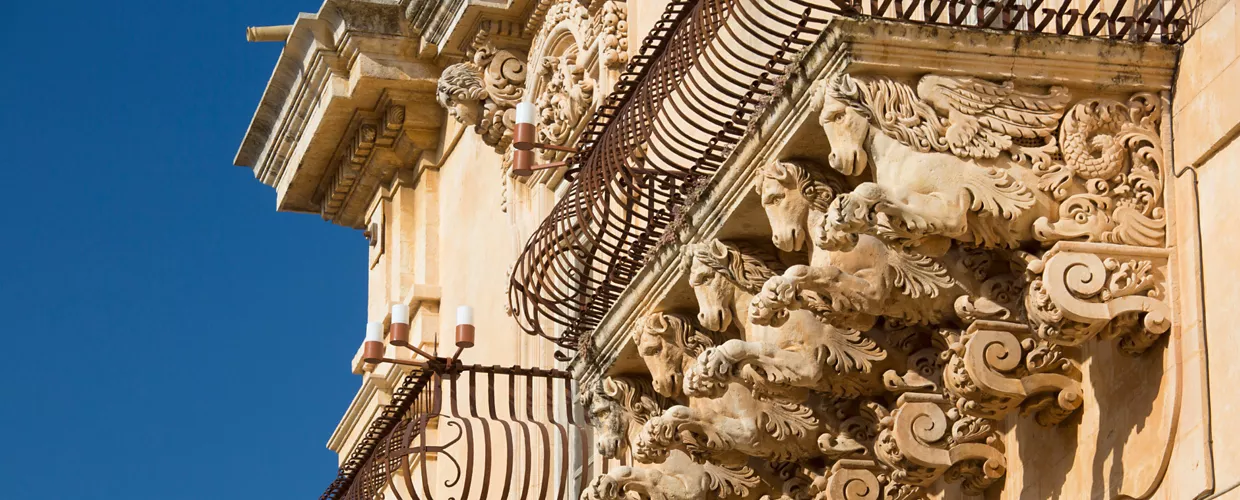
Overview
You are dazzled by the scenic perspectives and the rich decorations of the "Baroque capital". This is the definition given by the European Council, then confirmed by UNESCO, which has recognised Noto as aWorld Heritage Site. The ancient city was destroyed by the earthquake of 1693; present-day Noto was built from scratch a dozen kilometres further south, on an orderly grid of streets arranged on sloping terraces. It was designed by Giuseppe Lanza, Duke of Camastra, assisted by a team of high-profile technicians and engineers.
Symmetry and harmony were the golden rules for experimenting with innovative urban planning solutions and inventing increasingly precious decorative repertoires. "StoneGardens" is the poetic expression suggested by the great art historian and restoration theorist Cesare Brandi, to describe the challenge to nature by the imagination of architects and stonemasons in bringing stone to life.
Each of the three squares that interrupt the central axis of Corso Vittorio Emanuele is a stage, with sets composed of buildings and churches of incredible splendour. Leaving the corso along the perspective vanishing points of the decumani, as the lateral streets might be called if Noto were an ancient-Roman town, there is a continuation of other buildings and churches.
96017 Noto SR, Italia